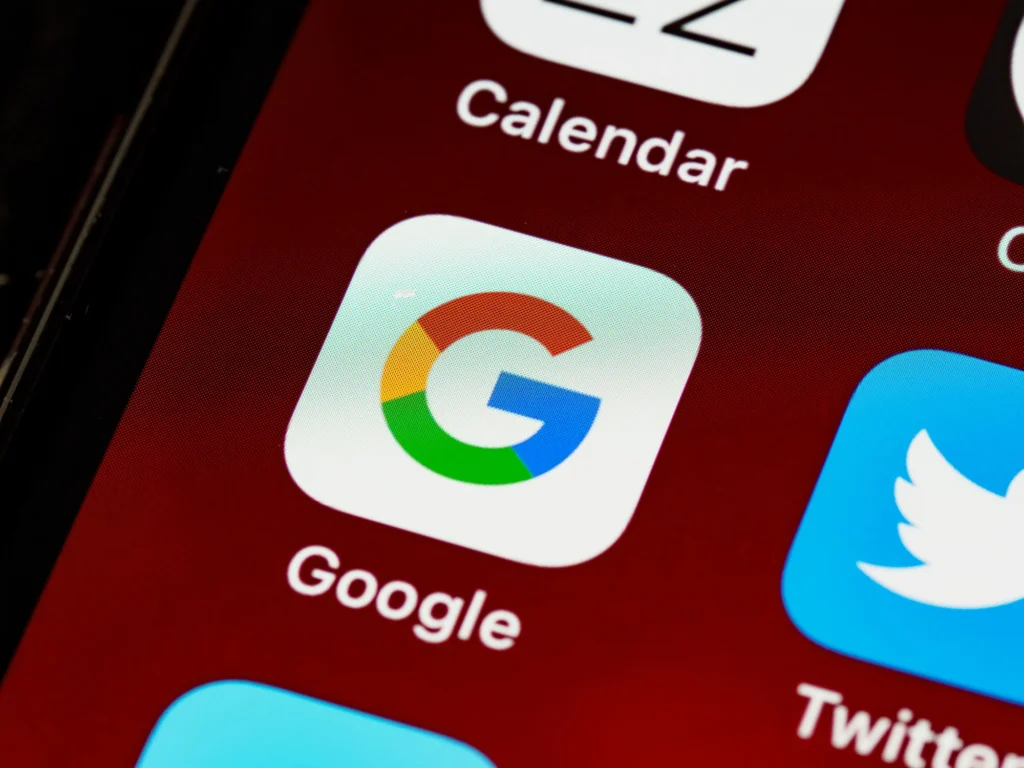Expanding Your Advertising Horizons: 5 Google Ads Alternatives Worth Considering
Every practice knows that advertising is important to get more patient leads and grow effectively. And when most people think advertising, they think of Google. But what about other platforms: is it worth it to advertise elsewhere as a private practice? That’s what we’ll explore on today’s episode of the Medical Marketing Podcast.
Welcome!
Hello everybody, and welcome to the Medical Marketing Podcast – the show where we give you actionable tips and advice to help improve your practice marketing, grow revenue, and take patient experience to the next level.
I’m your host, Crawford Ifland, and this week we’re looking at the topic of advertising outside of Google. Obviously Google is incredibly effective as a tool to grow your practice, but are there other platforms we should be looking at? And if it makes sense to advertise elsewhere, how can we go about doing that effectively?
That’s what we’ll be exploring today, so let’s dive in.
Google Ads’ Dominance in Advertising
There’s a reason that everyone thinks of Google when they think of online advertising: they’re the biggest. Google Ads accounts for billions in ad spend each year, and the platform makes up over 90% of Google’s revenue.
In a survey of private practice owners who use marketing to grow their businesses, we found that over 85% of them advertise through Google Ads in some form or fashion. This holds true regardless of the overall advertising goals for their practice, whether that be brand awareness or patient leads.
Google is simply too big to ignore. But what about other platforms? Let’s take a look at some of the big players out there and answer the question of whether or not it’s worth putting resources elsewhere.
Google Ads Alternative #1: Instagram & Facebook Ads for Doctors
When we talk about online advertising, Google is always the #1 name out there. But #2 is almost always Instagram and Facebook.
Facebook Ads for doctors (and here I’ll be saying Facebook Ads, even though that includes Instagram, too) are a great and cost effective ways for healthcare practices to advertise their services to potential patients. The advantages that Facebook Ads offers practices are a bit different than Google Ads, and that’s one reason why Facebook Ads can be so effective.
With Google, your primary targeting options are keywords – what a person is typing into Google. If a search is related to what you offer, you can bid on that keyword and ensure your ad is shown above organic search results. Patients are likely to click on the first relevant result they see…and if that’s your ad, you have a better chance of winning them as a lead.
Google Ads are what we’d a “pull” advertising strategy, because you’re pulling patients into your practice based on what they’re actually searching for.
In contrast, Facebook Ads are more of a “push” advertising strategy, because you’re inserting or pushing your ads into a patient’s News Feed when they’re just minding their own business.
This might sound intrusive…and yet, it works well because of Facebook’s targeting options. Because Facebook is a social network, it has a vast trove of personal and demographic data on its users – and you can use that to target people you want to see your ads.
Want to advertise cataract surgery to men within 20 miles of your practice who are between the ages of 55-65 and are also fans of your local sports team? With Facebook, you can ensure that your ads only serve to that audience. While you can get somewhat close on Google (for instance, you can target geographically and you might be able to get the user’s gender and age range), it’s a lot harder. This hyper-specific targeting is why Facebook Ads are such a powerful tool for doctors.
Another benefit of Facebook ads is in its demographic make up. Depending on who you want to target, Facebook can offer a lot of great options. These days, older generations tend to use Facebook more heavily than younger ones, while younger demographics are more commonly found on Instagram. A benefit of Facebook ads is that you can manage placements across Facebook and Instagram from one advertising platform so that you are visible to all demographics, and yet at the same time display contextually-relevant campaigns to the right demographic in the right place.
Of course, a lot of factors are at play, but in general, Facebook Ads tend to have a lower cost per lead than Google Ads. This isn’t universally true, but if you get your targeting right, you can typically acquire leads for anywhere from 20-50% less than you could on Google Ads. That cost savings alone makes Facebook Ads a terrific platform for doctors looking to grow.
Google Ads Alternative #2: Microsoft Ads on Bing
Ok, so we’ve covered social ads. What about other search advertising platforms? The other largest search advertising platform aside from Google is Microsoft Ads on Bing. Bing has nowhere near the market share that does, but they do have a solid advertising platform. That is just as easy to use as Google Ads. In recent months, Bing has been on the rise with Microsoft’s integration of AI features into Bing called Copilot. However, this has not led to Microsoft capturing more market share with Bing, which is what they had hoped for.
If your practice has a large enough budget, it could make sense to advertise on Bing. A large number of people do use Bing. It is nowhere near the number of people that use Google, but in general, there is less competition on Bing, so your cost per lead can be significantly less than on Google. However, the size of Bing means that you likely won’t be devoting a lot of ad budget to this platform compared to Google, so while you can pick up some leads, the cost per lead is typically astronomically high compared to Google. For this reason, we don’t advise most practices to spend money on Bing Ads, because there are more effective places they can put that.

Google Ads Alternative #3: LinkedIn Ads
This brings us to another social platform that offers advertising: LinkedIn. LinkedIn has a robust advertising platform, and since it has so many demographic details about its users, just as Facebook does, it offers quite a lot of targeting options. The benefit of LinkedIn Ads over Facebook ads is that LinkedIn knows everything about somebody’s professional history: where they have worked, what their experience in an industry is, etc.
For this reason, LinkedIn Ads are most effective for hiring and recruiting. Because LinkedIn is a business platform primarily, we don’t find many patients using it when searching for medical procedures. Yes, it may be important to have a presence on LinkedIn professionally, but most patient acquisition is not going to come from this platform. Now, if you’re looking to hire for your practice and grow your headcount, LinkedIn Ads is a terrific place to start. You can target exactly who you are looking for in terms of work experience, skills, and qualifications, and insert ads into their feed and promote LinkedIn job postings very cost-effectively.
Is it the best advertising platform for patient leads? No. But don’t write it off as a platform for growing other aspects of your business – LinkedIn definitely has its place.
Google Ads Alternative #4: Twitter Ads
Unless you’ve been living under a rock for the past year and a half, you will know that a lot has been happening over at Twitter. Elon Musk took over the company and made a lot of changes…changes that many, including advertisers, did not like. Advertisers have been fleeing the platform en masse and many are saying that Twitter Ads are dead.
However, because so many advertisers have left the platform, there is a terrific opportunity on Twitter. With less competition to fill up Twitter, inventory, cost per impression, cost per click, and cost per lead have gone way way down compared to prior years. The problem is, this isn’t where patients are spending a lot of time…and if they are, they are unlikely to be looking for your services here. The best advertising play for Twitter these days is for awareness. You can allocate a small percentage of your budget to keeping your brand top of mind if that’s important to you, but just be aware that you aren’t very likely to see many patient leads from this platform.
Perhaps one of the best ways to use Twitter Ads is to build a personal brand. Many physicians are quite active on Twitter, and use the platform to share research, professional insights, and network with other physicians. If that is a goal of yours, and you want to build a personal brand, Twitter Ads might be the best place to do that. You can funnel people to your profile, to your practice website, or highlight some of the great content that you’ve created. If you want to grow your personal brand and perhaps nurture industry relationships to become a Key Opinion Leader, than Twitter is a great place to be. Just don’t expect a lot of patient leads.
Google Ads Alternative #5: Display Networks like AdRoll
There are a ton of other platforms out there where you can advertise – every advertising platform wants your money, of course. There are too many platforms to go into detail here, but the other type of platform I’ll mention are display networks.
Display networks are a great way of showing banner ads to perspective patients across the Internet. Google Ads offers their own display network, but they limit how this network can be used for retargeting if you are in healthcare. This is because Google considers healthcare a sensitive category, and so you can’t use personalized information to display ads to would be patience.
Other display ad networks like AdRoll do not have this limitation. The best strategy is to acquire website visitors from campaigns on Google Ads, Facebook Ads, and other platforms, and then to reengage those patients with a display network like AdRoll. AdRoll lets you show display banners to patients across the entire Internet, who have not converted. Perhaps they clicked on an ad and browsed your website, but didn’t request an appointment. AdRoll and other display networks are a great way to continually reengage these patients until they come back to your website and take a desired action. They are very cost-effective and can be a great way of scooping up patient leads who otherwise would have been lost.
So now we’ve taken a look at several different ad platforms. Let’s now discuss some things to keep in mind as you establish your advertising channel mix.
Understanding Platform-Specific Idiosyncrasies & Aligning Ad Campaigns to Match
OK, so now we’ve looked at many different ad platforms and explored their unique strengths and weaknesses. Regardless of which ones you choose to engage on, you need to be mindful that each platform is different. And I’m not just talking about the practicalities of creating campaigns on each of these platforms – I’m talking about the make up of their users and what is considered appropriate on each platform.
This is relevant because your ad campaign, messaging, and creative will need to adapt depending on which platform you’re advertising on. Not only do constraints of each ad platform come into play, but the messaging will change as well: the type of language you might use on Twitter Ads is going to be very different than what you would post on LinkedIn. So as you establish your marketing channel mix, keep this in mind. You need to adapt your messaging and your strategy to each platform in order to have the best chance of success.
And yet, at the same time you need to ensure some level of consistency and cohesion for your brand as you advertise on different channels. While the messaging needs to be uniquely suited to the ad platform you’re using, so need to sure that your practice is well-represented and presents a consistent user experience, regardless of the platform you’re on. This is one thing that many practices miss as they advertise, so if you want to be on more than one channel, you’ll need to keep this in mind.
Measuring ROI Across Different Ad Platforms
So now we come to the question of measuring ROI. This is a tricky one, but it’s fundamental to all of the advertising you do, regardless of your goals.
And as we noted earlier, your goals may look different on each platform. Because of this, you need to adjust your expectations for ROI accordingly. On a traditional platform like Google, the most important metrics you may want to track are leads and cost per lead. This makes sense, because most times your goal is to grow your practice with Google Ads.
But what about platforms like Twitter or LinkedIn, where your goal is to build awareness and stay top of mind? You need the metrics that are most important to each platform you advertise on, and keep in mind that while you’re overall goal of advertising may be practice growth, your goals and strategies for each individual platform may look different from one another.
Practice growth on LinkedIn may look like more qualified candidates for your job openings. Practice growth on Twitter or a display network look like viewable impressions or website traffic. Whereas practice growth on Facebook Ads or Google Ads may look like patient leads and appointment requests.
Too many practices fail at advertising when they expect the same results from each platform. The smarter approach to take here is to tailor your expectations according to which platform you’re advertising on. It’s also important to keep in mind that each ad platform success can feed into success on another platform. Increased brand visibility on Twitter may lead a patient to click on your website. Even if they don’t take a desired action, this adds them to an audience in AdRoll, and you are able to target them with Facebook Ads as well.
Success breeds success, so even if you aren’t seeing tangible growth on one platform, just remember that your activity on platform can often times lead to growth in other platforms down the road. Keep in mind that practice growth doesn’t look the same on each ad platform, and you’ll do just fine.
So we’ve seen that other ad platforms can definitely be effective for practice growth, but how you use these platforms depends on your overall goals. You need to keep platform-specific goals in mind as you advertise on each platform, because what you get out of one platform may be very different than what you get out of another. At the end of the day, it is definitely effective to advertise on platforms other than Google, but the way you go about it will determine how successful you are.
What’s the right mix for your practice? That’s a question I can’t answer, but if you’re wondering about different ad platforms and how you can use them them to grow your practice, please feel free to get in touch with our team. We would love to learn more about your practice and explore how you may be able to use different ad platforms to grow and build the practice of your dreams.
Next time…
Well, that’s all for this week’s episode of the Medical Marketing Podcast – thanks for tuning in.
You can subscribe to The Medical Marketing Podcast for free on Apple Podcasts, Spotify, or wherever you like to listen. And if you like the show, let us know by writing a review on Apple Podcasts – we’ll have a link in the show notes.
If you want more practice marketing resources, check out our website at www.messenger.md. We’re always sharing helpful tips and know-how to help you improve your practice marketing, grow revenue, and take your patient experience to the next level.
That’s all for today’s episode – I’m Crawford Ifland. See you next time.








